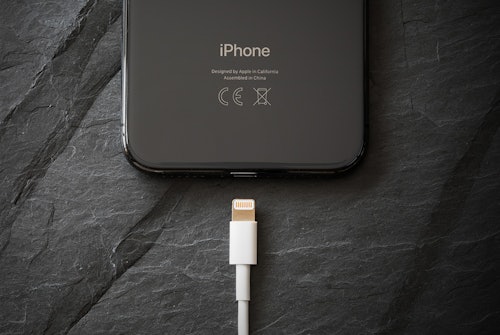- What Are the Best Practices When Using Amazon?
- Red Flags of Amazon Scams
- How to Protect Yourself From Amazon Scams
- Report Amazon Scams
- Frequently Asked Questions About Amazon Scams
Whether it's the age-old Amazon Prime renewal scam or phone call scammers pretending to be security officials, Amazon has long been the target of ambitious bad actors looking to take advantage of customers. Here are some tips on how to beat Amazon scams and stay safe.
What Are the Best Practices When Using Amazon?
Before finalizing a transaction, it's always best to ask questions. You should only complete the purchase after you're completely comfortable. In addition, to avoid getting scammed:
- Don't deal with a seller that tries to get you to leave Amazon's website. Genuine Amazon transactions always happen on Amazon's site.
- Don't send money, using any method, to a seller who says that Amazon can guarantee a safe transaction, give you a refund, or keep your money in escrow. Instead, always complete transactions within your Amazon account.
- Don't pay money to claim a prize or lottery winnings. Also, don't pay money upfront to someone promising to give you more later.
- Don't pay money to access a credit card or loan that's "guaranteed."
- Don't reply to offers over the phone or internet unless you are sure the person is honest.
- Don't give money to anyone whose identity you can't confirm.
- Don't reply to emails asking for personal information, passwords, or other contact information, such as your email address. Amazon doesn't ask for personal information.
- Activate two-step verification to provide an extra layer of security to your Amazon account.

- Thousands of brands, millions of products
- Free shipping on millions of items
- Free One-Day delivery with Amazon Prime, available coast to coast
Red Flags of Amazon Scams
Here are some red flags of the most common scams to look out for on Amazon:
- Suspicious emails or text messages
- Non-Amazon links/URLs
- Payment information change request
- Request to install software to your device/s
- Grammatical and spelling errors or typos
- Phone calls from Amazon
Suspicious Emails or Texts
If you receive an email that looks like it's from Amazon but has some questionable elements (e.g., blurry images, weird design, typos), it's likely a scam. Don't click on any links. If you want to check the status of an order, log in to your Amazon account directly from the Amazon website or via the app.
Non-Amazon URLs
A link to a website that looks like Amazon.com but has a different address is a scam website. Any legitimate Amazon.com web page will have "amazon.com" as the primary domain. For example, the pharmacy page on Amazon has the URL "pharmacy.amazon.com." If you ever click a link and end up on a site that doesn't have a real Amazon domain in this format, it's fake.
Request to Change Your Payment Information
Sometimes, scammers will request you change your payment information for an account not connected to an order you've placed with Amazon or an Amazon service you've already subscribed to. That's a sure sign of a phishing attack. Any suspicious communications should be met with caution.
Request to Install Software
If you get an attachment or a prompt asking you to install software on your device, this is a scam. Amazon doesn't require downloading and installing additional software to use the website or its services.
Typos or Bad Spelling and Grammar
Always look for misspellings, grammatical errors, and typos within any email, text message, or website. Amazon's communications with you should be free from any errors like this.
Call from Amazon
Amazon doesn't call its customers unless you have requested a callback. If someone calls you claiming they're from Amazon and asks you for personal information, hang up and don't give them any details, including your account information.
Many of these calls involve a recorded message asking you to confirm a purchase of an expensive item using your saved payment method. If you're unsure if they're actually from Amazon, hang up and send Amazon an email.
How to Protect Yourself From Amazon Scams
Knowing how to protect yourself from scams is the first step to keeping your money and information safe from scammers.
Keep Your Information to Yourself
Don't give out gift card information over the phone to pay a third-party seller. The same goes for requests sent via email or text message. Amazon will never send an invoice to you requesting that you pay for something using your Amazon gift card.
Use Amazon's Payment System
Do not initiate a payment unless it is on Amazon's legitimate site. This applies regardless of the payment method. A scammer could use a fake site to gather sensitive information and use it to steal from you.
Never pay someone who claims that the payment will guarantee a transaction—including people who claim that if you pay them, they can ensure you get a refund if you're unsatisfied with your purchase. This kind of scam can also come in the form of someone saying they will hold your funds in escrow.
Don't Respond to Suspicious Emails
Do not reply to messages containing offers that are too good to be true. This includes items that are priced far below the typical asking price, as well as those the seller claims to be selling at such low prices because they need to get rid of them quickly.
Use a Strong Password and Two-Step Verification
It's essential to use a strong and unique Amazon password to stop scammers from accessing your account. Additionally, turn on two-step verification (2SV) so that even if someone does have your Amazon password, they will still need to get past an extra layer of security.
If you're having trouble remembering all of your different login combinations, a password manager can help.
Amazon
Contact page: https://www.amazon.com/gp/help/contact-us/general-questions.html?skip=true
It's important to verify links and contact details to beat imposters.
Report Amazon Scams
Anytime you think someone has fraudulently contacted you while pretending to represent Amazon, you should report it. Whether a scammer texted, emailed, or called you, reporting it can help Amazon fight the scams and protect others from falling for them.
Amazon.com can be a safe place to buy and sell, but it's important to be careful while using the site or communicating with anyone claiming to represent Amazon. Remember to never give your personal information to anyone whose identity you can't verify. If anything seems suspicious about a communication, web page, or transaction, it's best to close the page, end the interaction, and report it to Amazon.
You can also report Amazon scams to the authorities, such as the Federal Trade Commission (FTC) and your local police, to help catch the scammers.
Report Security Breaches
If you've discovered a security vulnerability relating to a product Amazon sells or any of their retail services, you should submit any important details using Amazon's web form.
Report Unauthorized Activity
If you feel you've been targeted by a suspicious credit card transaction scam, fraudulent purchase, request for a password change, or change to your account, you should quickly report unauthorized activity.
Report Phishing Attempts
If you've received a suspicious email, you should report it to Amazon. A phishing email is where the attacker tries to get you to divulge sensitive information. They can then use this to defraud or impersonate you to access your accounts and even get your bank account information.
Report Vulnerabilities with Amazon Web Services
If you have issues with Amazon Web Services, you can report vulnerabilities online.
Report Job Fraud
If you feel you may have received a fraudulent request for Amazon employment, you should try to get Amazon fraud protection by emailing [email protected].
Notify Your Bank
If a scammer has managed to get your financial information, notify your credit card company or financial institution immediately. They'll be able to cancel your card so the Amazon scammers can't make fraudulent transactions, and you'll even be able to get a refund on purchases they've already made.











Comments